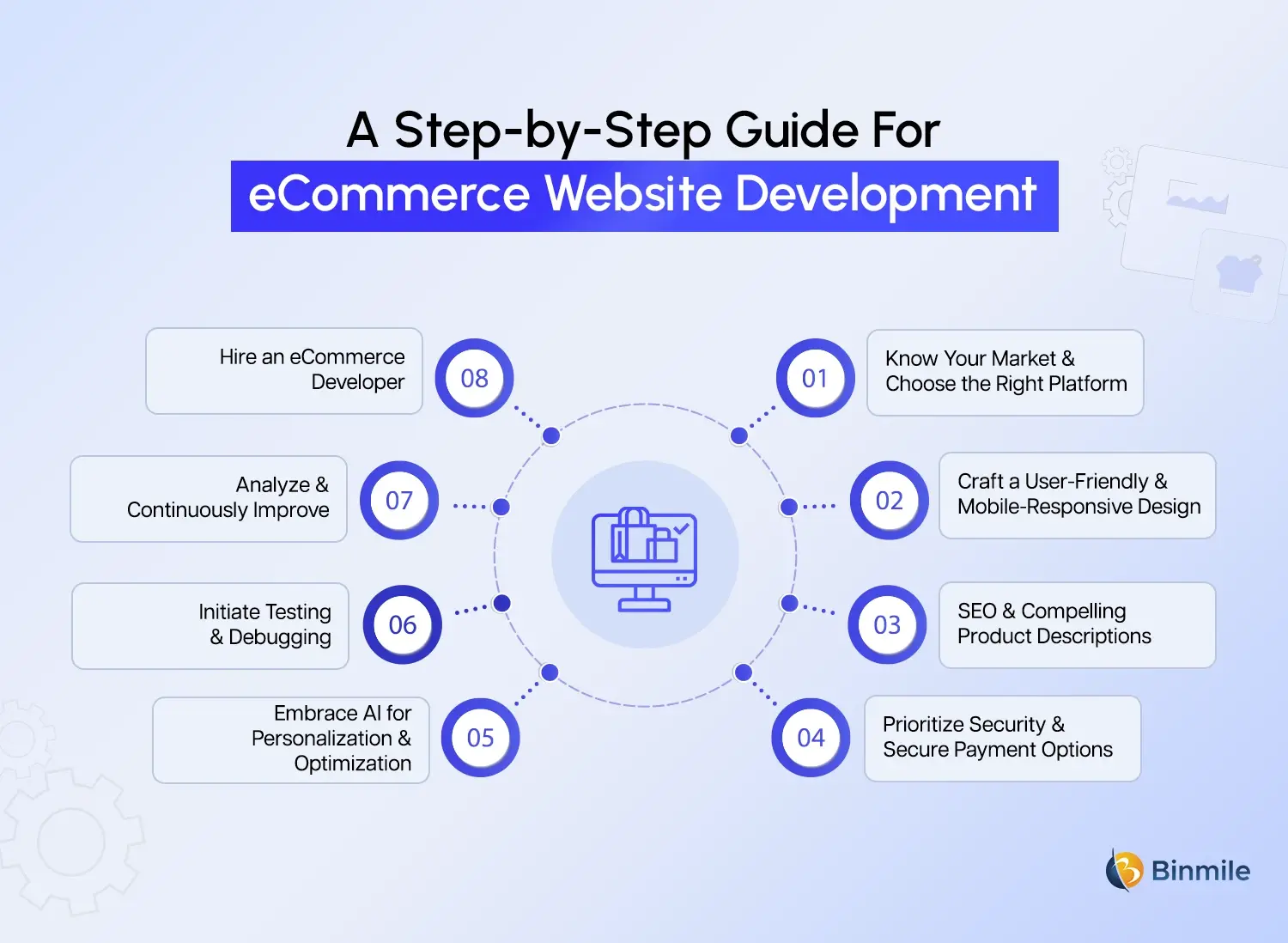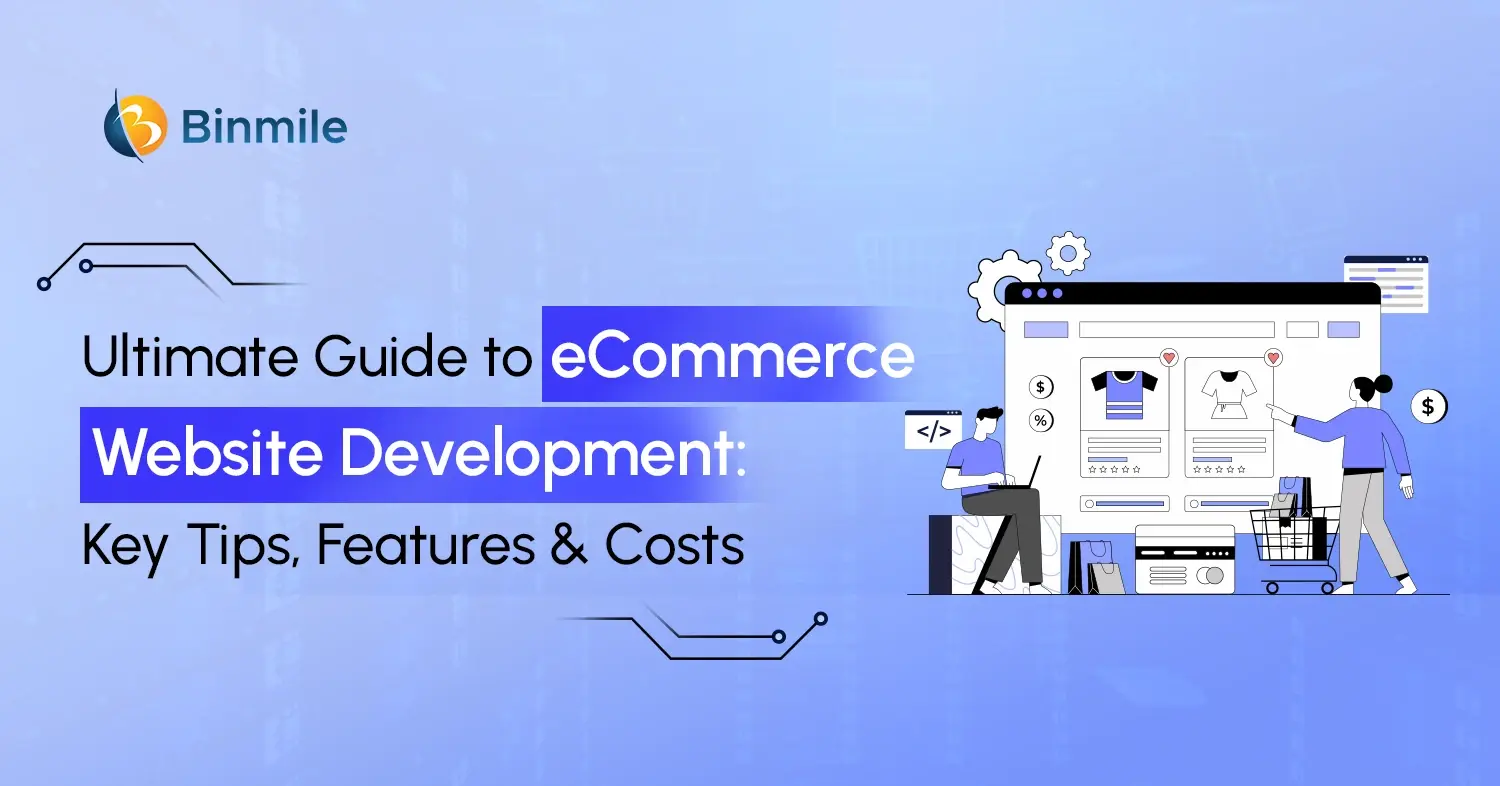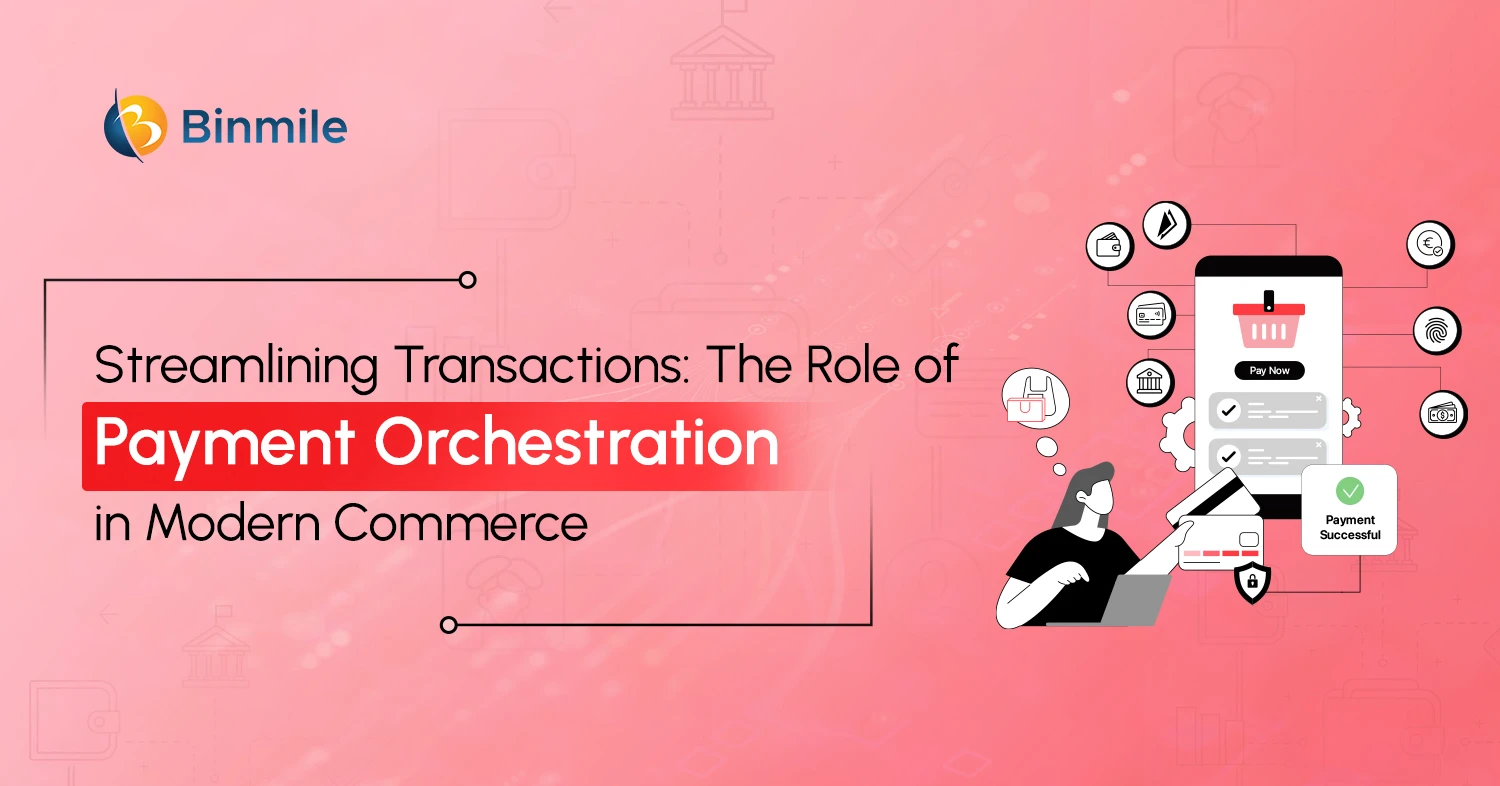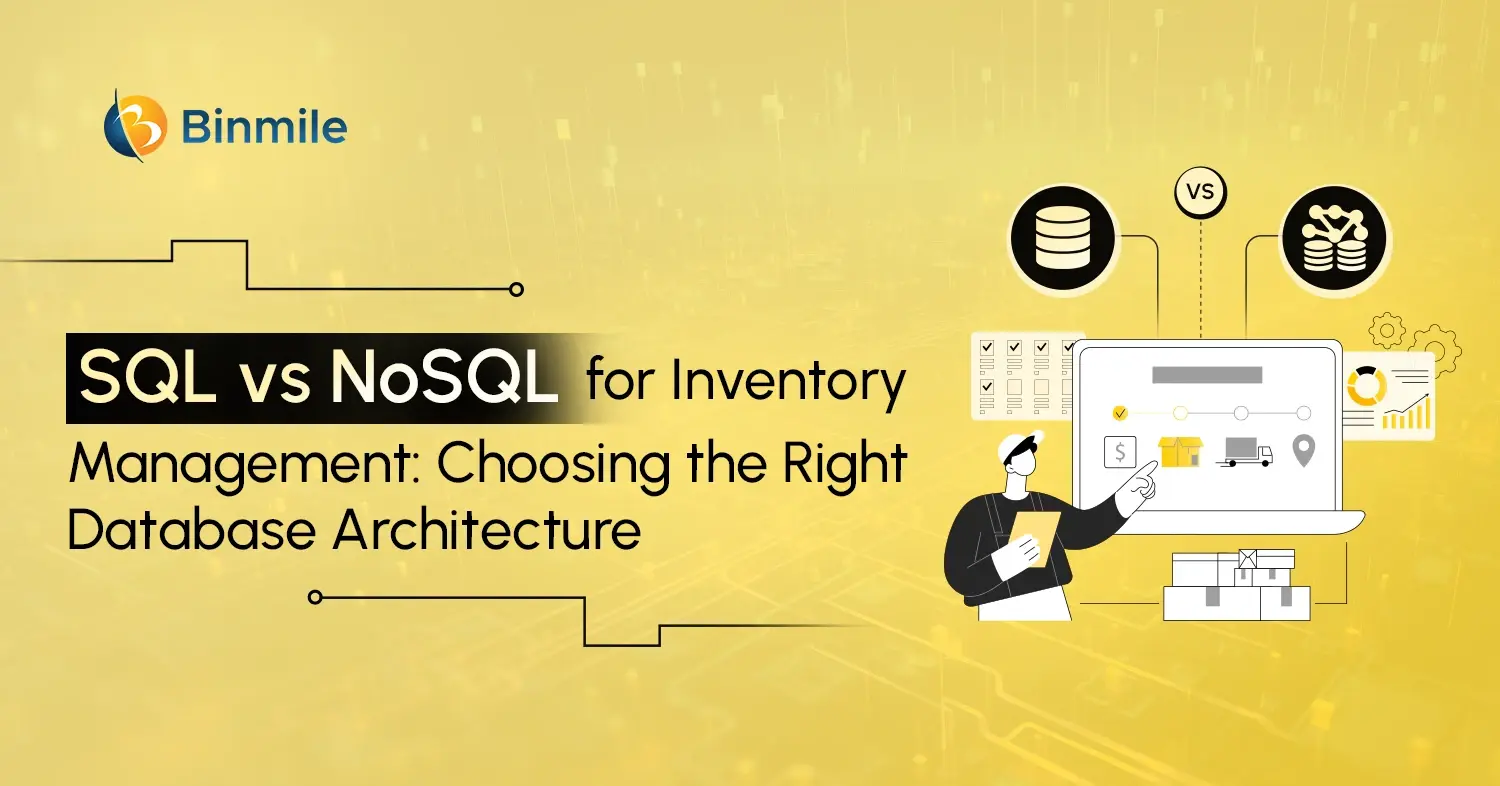The success of your eCommerce business depends a lot on how well-developed your eCommerce website is. And no, it’s not just about your website looking visually appealing; an effective eCommerce website development is more than just design. It’s also about developing user-friendly interfaces, integrating secure payment gateways, offering seamless product catalogs, and implementing features to enhance the overall shopping experience of your customers. This turns them from visitors to buyers, boosting sales and profits and brand equity that can carry your business forward.
To develop a site with a modern look and feel, security, as well as a high level of easy usability on any device, whether a laptop or a mobile phone, you need professional eCommerce web app development companies and their services. So, let’s understand how to build a versatile eCommerce website, and also discuss the top features to have in your eCommerce website for high conversion.
eCommerce Market Growth
The eCommerce industry is experiencing rapid expansion, with continued growth expected in the coming years.
- According to Statista, the global eCommerce market is projected to reach $4.32 trillion by 2025. Also reports that eCommerce sales are expected to make up 22.9% of total global retail sales by the same year.
- SaleHoo highlights that China will continue to dominate the global eCommerce market, with projected sales of $1.25 trillion in 2025, followed by the United States at $1.06 trillion and Japan at $241 billion.
- Furthermore, The Business Research Company predicts that the global eCommerce sector will grow from $4.49 trillion in 2024 to $5.06 trillion in 2025, reflecting a compound annual growth rate (CAGR) of 12.7%.
A Step-by-Step Guide for eCommerce Website Development
Building a successful online store requires more than just listing products on a website. To truly thrive, your eCommerce website needs intense planning, strategic design, and a focus on user experience. So, let’s discuss how you can achieve this with these 7 essential steps:

1. Know Your Market & Choose the Right Platform
Start by analyzing aspects like the targeted audience and market through competitor analysis. This will enable you to make your brand stand out and make your website appealing to the targeted customer. Then, select the best eCommerce platform and consider factors such as the scalability of the CMS for eCommerce web development, the features and the budget you have, as well as ease of use. The most chosen platforms are Shopify, Wix eCommerce, and WooCommerce.
2. Craft a User-Friendly & Mobile-Responsive Design
Everything starts with the first impression of your website, which means allowing your website to adapt to different screen sizes and devices, along with offering an intuitive, consistent layout across various devices, including desktops, smartphones, and tablets. Additionally, prioritize HD product photos or videos, and enhance site speed & performance with a secure and seamless checkout process that is responsive on any device. Once you’ve made a good impression with mobile-friendly web development, and it is easy for users to look for information using any device, users will spend more time interacting with your website, eventually resulting in conversions.
3. SEO & Compelling Product Descriptions
SEO (Search Engine Optimization) is your key to attracting organic traffic. Conduct keyword research to understand what your target audience searches for, and naturally integrate those keywords into your product descriptions, meta tags, and website content. Additionally, ensure your website structure is search engine-friendly.
Compelling product descriptions are crucial for grabbing attention and driving sales. Write a clear, informative copy that highlights the unique features and benefits of each product.
4. Prioritize Security & Secure Payment Options
Building trust is essential in eCommerce, and to protect your website against eCommerce security threats, follow best practices for security like setting up multilayer security, using SSL certificates and firewalls, and of course, installing anti-malware and antivirus software. Since you offer a variety of payment options, including credit cards, popular online wallets, and trusted payment gateways, ensure they’re secured. Displaying security badges can also give your customers peace of mind.
5. Embrace AI for Personalization & Optimization
AI in eCommerce is not only simplifying eCommerce development solutions but also enhancing different tasks, such as:
- It can analyze customer behavior and purchase history to recommend products they’re likely to be interested in. This can increase customer satisfaction and sales.
- AI-driven search can understand user intent and provide more relevant search results, leading to a better user experience.
- With AI-powered chatbots, you can answer customer questions 24/7, improving customer service and reducing support costs.
6. Initiate Testing & Debugging
Before you launch your website, ensure it has been thoroughly evaluated and validated in various aspects of an online store to ensure its reliability, functionality, and security. Proper QA and software testing not only ensure that everything on your website is working as it should be but also boost conversions with a flawless user experience. So, consider testing features or functions like:
- All calls-to-action and form titles on the homepage and landing pages
- Checkout experience
- Payment processing integrations (credit cards, PayPal, Stripe, etc)
- Images are high-definition but optimized for load speed
- Any missing product categories and descriptions
- All links and forms are functional
- Inventory is properly listed
- Test your coupons/promo codes
7. Analyze & Continuously Improve
Building a successful eCommerce website is an ongoing process. Continuously monitor your website’s performance using analytics tools. Track key metrics like conversion rates, bounce rates, and customer acquisition costs. This data will help you identify areas for improvement and optimize your website for better results. By analyzing your data and making data-driven decisions, you can ensure your eCommerce website continues to thrive and grow.
8. Hire an eCommerce Developer
You can skip all major steps and select a top eCommerce web development company and witness how they get your eCommerce business up and running fast. Utilizing cloud-based software-as-a-service (SaaS) solutions, they can create an excellent, responsive, easy-to-use eCommerce website and back-end for you, all with high efficiency and low cost. So, while you look out for the partner, consider factors like their client testimonials and case studies, cost & budget considerations, and development process & workflow.
Don’t forget about marketing! Your website launch is just the beginning. Develop a marketing strategy to drive consistent traffic to your store. Leverage social media, email campaigns, and pay-per-click advertising to reach your target audience—these touchpoints can strongly influence buying decisions. Use tactics rooted in “buy now” psychology, such as limited-time offers, urgency-driven CTAs, and scarcity messaging to encourage quicker conversions. Encourage satisfied customers to leave reviews and showcase them prominently on your product pages. This kind of social proof—from testimonials to ratings—builds credibility and nudges potential buyers toward action.
Looking to build a secure, performance-focused eCommerce website that converts visitors into customers?

Must-Have Features for Effective eCommerce Website Development
You know what eCommerce website to build and from where, but it will not skyrocket your sales or other conversions if you don’t have the eCommerce website features that your users demand. So what are these? Without these features, your website could become just a fancy artwork rather than a sales-driven online store:
- PCI compliance and web security
- Multiple payment options and gateways
- CMS (content management system) integration
- Fast Loading Speed
- Easy Navigation
- Sorting and Filtering
- Guest Checkout
- Product Return Information
- FAQ Page
- Support Chat
- Good user interface/experience
- Positive mobile experience
Build a sales-driven eCommerce website! Let our team design the perfect online store for you. Contact us today for a free consultation.

How Much Does it Cost to Build an eCommerce Website?
Depending on several factors such as website type, advanced features, or location of the developers, on average, eCommerce website development costs range from $10,000 to $250,000 or more.
| Factor | Small Business ($10K – $30K) | Mid-Size Business ($30K – $80K) | Enterprise ($80K – $250K+) |
|---|---|---|---|
| Platform Choice (Shopify, WooCommerce, Magento, Custom) | SaaS-based (Shopify, WooCommerce) | Custom CMS or SaaS Hybrid | Fully Custom, Scalable CMS |
| Website Design & UI/UX | Basic theme customization ($2K – $5K) | Custom design with animations ($8K – $15K) | High-end custom UI/UX ($20K – $50K) |
| Product Catalog Size | < 500 products | 500 – 5,000 products | 10,000+ products, multi-store |
| Third-Party Integrations (CRM, ERP, Shipping, Inventory) | Basic payment gateway (Stripe, PayPal) | CRM & Inventory integration ($5K – $10K) | Enterprise-level API integrations ($20K – $50K) |
| AI & Personalization (Chatbots, Recommendations) | Basic chatbot ($1K – $3K) | AI-based product recommendations ($5K – $15K) | Full AI-powered automation ($30K – $80K) |
| SEO & Performance Optimization | Basic on-page SEO ($1K – $3K) | Advanced SEO & analytics ($5K – $10K) | AI-driven SEO & predictive analytics ($15K – $30K) |
| Security & Compliance (PCI, SSL, Firewalls) | SSL + standard security ($500 – $2K) | PCI Compliance, DDoS protection ($5K – $10K) | Advanced security, data encryption ($15K – $40K) |
| Mobile App Development (Optional) | No app | Hybrid app ($15K – $30K) | Native iOS & Android apps ($50K – $150K) |
| Maintenance & Support (Annual) | $2K – $5K | $5K – $15K | $20K+ |
Know the Cost: eCommerce App Development Cost
Summing It Up
With so many eCommerce websites available online, it’s difficult for businesses to stand out. A versatile, secure, highly functioning, and highly interactive website makes a huge difference in whether an eCommerce business stays relevant and on top. Therefore, you must evaluate all of your business’s needs and goals before you start this development journey. You can follow the best practices discussed in the blog for guidance. However, building an eCommerce platform that focuses on creating a user-centric experience, especially one that supports evolving trends like the subscription-based eCommerce model, is a tough nut to crack, particularly without the intervention of a top eCommerce website development company. They’ll guide you through market research, platform selection, and implementation of development best practices to ensure your website supports your business goals.
Take the first step towards your eCommerce dream today and partner with a reputable website development company to enhance your online business and gain high-value conversations and conversions!
Frequently Asked Questions
When choosing an eCommerce developer, consider their experience with the platform you plan to use, their portfolio of past projects, client testimonials, technical skills, and their ability to understand your business needs and goals.
Structuring an eCommerce website involves creating a user-friendly layout that guides visitors effortlessly. Begin with a visually appealing homepage that highlights your best-selling or new arrivals. Use logical categories and subcategories to organize products. Each product page should include clear images, descriptions, prices, and reviews. A consistent design across pages with a functional search bar, filtering options, and an easy-to-follow checkout process completes the structure.
- Research your target audience and their needs.
- Include must-have features like secure payment, mobile responsiveness, and easy navigation.
- Analyze competitors and industry standards.
- Align features with your business goals, such as loyalty programs or live chat.
The time required to develop an eCommerce website varies based on complexity and features.
- Basic eCommerce site: 4-8 weeks.
- Complex site with custom features: 12-24 weeks.
- Timely delivery depends on experienced developers and clear communication.
To integrate payment gateways, start by selecting a provider such as Stripe, PayPal, or Razorpay. Most eCommerce platforms like Shopify and WooCommerce offer plug-ins for these gateways, making integration straightforward. For custom-built websites, use the provider’s API documentation to configure the gateway securely. Always test thoroughly to ensure smooth transaction processing.









